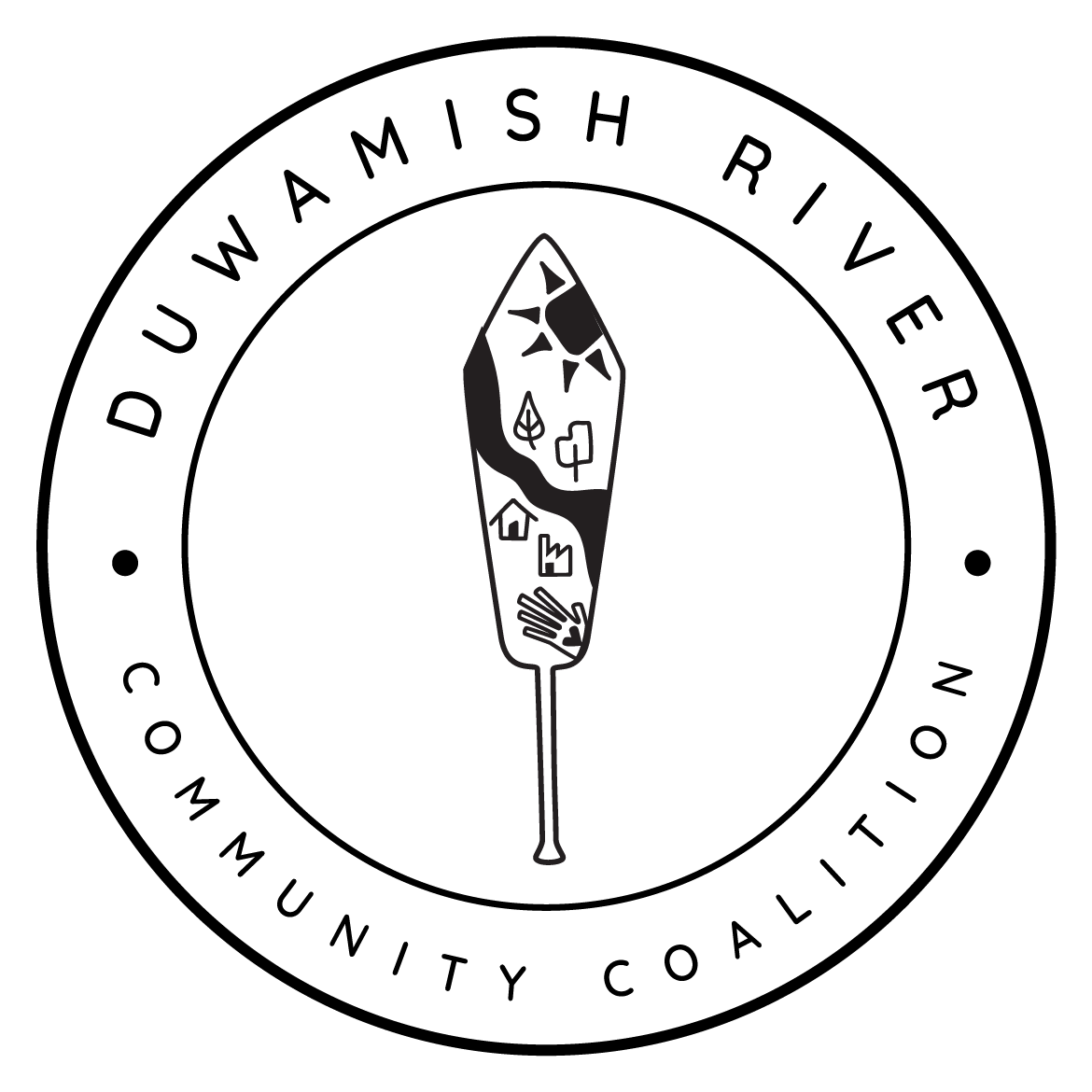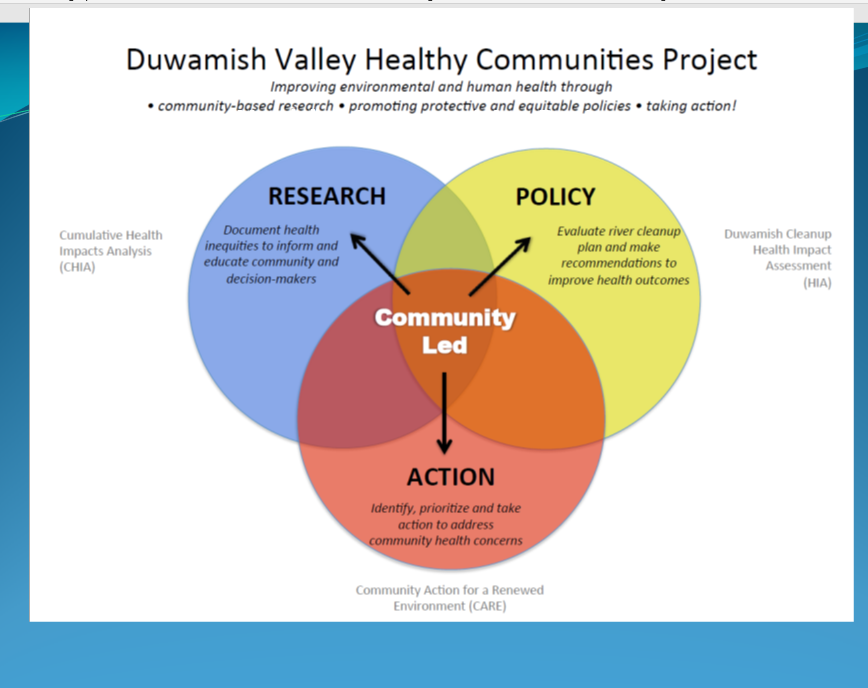Cumulative Health Impacts Analysis (CHIA)
The Duwamish Valley Cumulative Health Impacts Analysis (CHIA)
Published in 2013 by Just Health Action and DRCC/TAG, the Cumulative Health Impacts Analysis (CHIA) examines a range of disproportionate health exposures and impacts affecting people in the Duwamish Valley. In the report, a total of 15 indicators were input into a formula to calculate cumulative health impact scores for ten representative zip codes in Seattle. The highest cumulative impact score was the Beacon Hill/Georgetown/South Park neighborhood zip code 98108. With the support of this data, the Duwamish Valley can firmly be characterized as an area with disproportionate health impacts and environmental injustices where more actions, projects, and investment is needed to address health inequities.
Duwamish Valley healthy Communities Project
A look at some of the key findings that you can find in the report:
Zip code 98108 has the highest cumulative impact score of all Seattle areas in the study: Scores can range from 6 to 120, with higher scores indicating more disproportionate impacts. 98108 received the highest score of 106 while the lowest score of 13 was found in the neighborhood of Magnolia, zip code 98199.
Zip code 98108 ranks poorly for most environmental health factors: This zip code is home to the greatest number of contaminated waste sites and the poorest built environment characteristics of all areas studied. It ties with the Eastlake neighborhood (zip code 98102) for most severe air pollution.
Analysis by zip codes obscures even greater impacts specifically in South Park and Georgetown: When examined separately from the rest of zip code 98108, South Park and Georgetown residents have a life expectancy of 73.3 years, which is 8 years shorter than the Seattle and King County average and 13 years shorter than for residents of the neighborhood of Laurelhurst, in zip code 98105.
This report continues to inform policies, projects, and priorities put in place to improve overall environmental health and equity in the Duwamish Valley. The data provides context for recommendations provided to local government agencies and EPA as it relates to the cleanup, pollution source control, and beyond.
CHIA Report and Support Documents
Cumulative Impact Analysis Poster: Using Science to Influence Decision-making in Seattle, WA
Cumulative Health Impacts Analysis FACT SHEET & RECOMMENDATIONS
Cumulative Health Impacts Analysis REPORT
– Appendix A: Additional indicator maps: Figures A1–A9 & Tables A1–A2
– Appendix B: Community Based Participatory Research: Figures B1–B2
– Appendix C: Data – Table C1 (raw data for Fig. 2–17)*, Table C2 (health indicators for 10 ZIP codes), Table C3 (Duwamish Valley indicators)
*This appendix is a large excel file. Please contact us via email to request delivery of an electronic copy: contact@duwamishcleanup.org.


